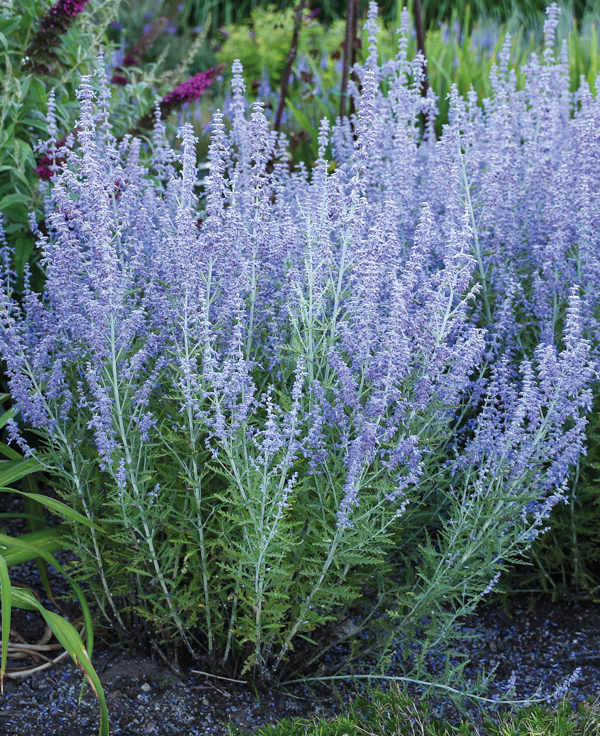How to grow Perovskia
This member of the mint family contains 7 species of deciduous subshrubs which can be found growing in rocky sites from Central Asia to the Himalayas. The most commonly cultivated is Perovskia atriplicifolia, valued for its undemanding, vigorous, and floriferous nature. This upright subshrub has aromatic, grey-green foliage and from late summer to autumn, large plumy panicles of lavender flowers.
Perovskia atriplicifolia is known by the common name of Russian sage (though it originates from Afghanistan). In 2017 botanists revised its position in the mint family, deciding it should sit within the salvia genus. Its correct botanical name is therefore Salvia yangii, though many growers and gardeners continue to refer to it as perovskia.
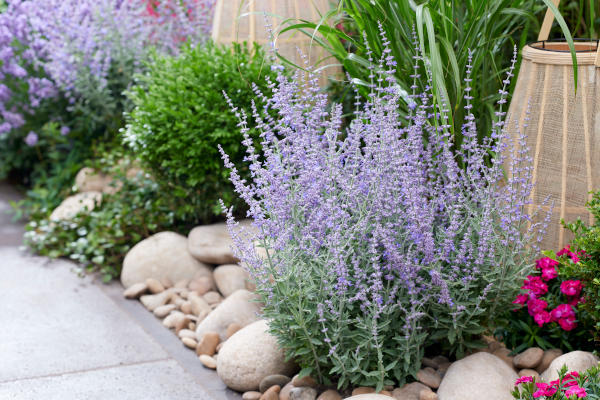
Zantedeschia is a genus of flowering plants from the family Araceae and is native to southern Africa. With a rich history dating back to the Ancient Romans, these deciduous or semi-evergreen perennials have been used as a symbol of celebration. Zantedeschia was Named after Professor Giovanni Zantedeschia, an Italian botanist.
There are two main forms of Zantedeschia: hardy and tender. Hardy forms of the plant can be grown outdoors, enjoy moist soil and full sun or partially shaded conditions - these are known as Arum lilies. Tender forms of Zantedeschia prefer being grown in containers or pots and should be brought inside over the winter - these are known as Calla lilies.
With tuberous flora in all colours from whites, yellows and oranges to deep reds and purples, Zantedeschias are not to be overlooked in any garden, as long as they have sufficient sunlight to grow in.
Ready to learn more about growing Zantedeschia? Read on for all there is to know...

Key Information
Soil pH
Position
Hardiness

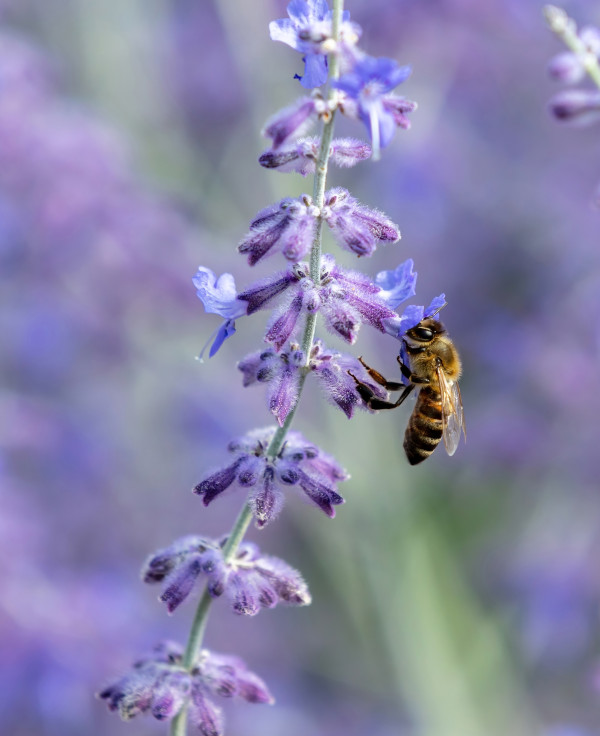
Where & when to plant Perovsiia
Position - Full sun
Soil - Well-drained, poor to moderately fertile
Flowering Period - Late summer to autumn
Hardiness - Hardy
For best results, plant in autumn or spring. An autumn planting can be done by those gardening in mild conditions (and broadly speaking, this is the southern half of the UK). For those liable to very cold winters, it is best to wait until spring (generally the northern half of the UK). Planting can also be carried out in summer, though be prepared to water regularly.
Perovskia makes an easy and rewarding addition to a sunny, well-draining border or gravel garden, and will tolerate dry, chalky soil as well as coastal conditions. It is impressive enough to make a splash when planted singly, though for real wow factor try a group of three or five. Avoid soil prone to winter waterlogging.
Perovskia can also be grown in a container if given ample watering.
How to plant Perovskia
In the ground
- Clear the chosen area of weeds.
- Dig a planting hole several times larger than the root ball. If you are gardening on heavy, clay soil, now is the time to dig in plenty of horticultural grit.
- Place the plant in the hole, ensuring the top of the root ball sits level with the surface of the soil. Too low and the plant may rot, too high and the roots can dry out.
- Backfill with soil and firm in gently.
- Soak well with water.
- Mulch around the base with well-rotted organic matter.
In a container
- Choose an appropriate container, ensuring there are plenty of drainage holes. Perovskia can be a tall plant, so choose a large, deep pot to prevent it from becoming top heavy and blowing over.
- It can be worth potting up large containers in situ to save yourself the trouble of moving once full.
- Use a good quality potting compost with plenty of horticultural grit mixed in, and, if not already present in the compost (check the description on the bag) some slow-release plant food.
- Start by partially filling the pot with compost; enough so that when placed on it the upper surface of the root ball is about 3cm lower than the top of the pot.
- Infill all the space surrounding the root ball with compost, firming down with your fingers then adding a little more so the plant is held tight.
- Pick up the pot (if you can!) and lightly tap on the potting bench or ground a few times to help further settle the compost around the plant.
- Soak well with water.
- A mulch with horticultural grit will look attractive and help to prevent a ‘cap’ or crust forming on the top of the compost (something container plants can suffer due to the artificial nature of their watering).
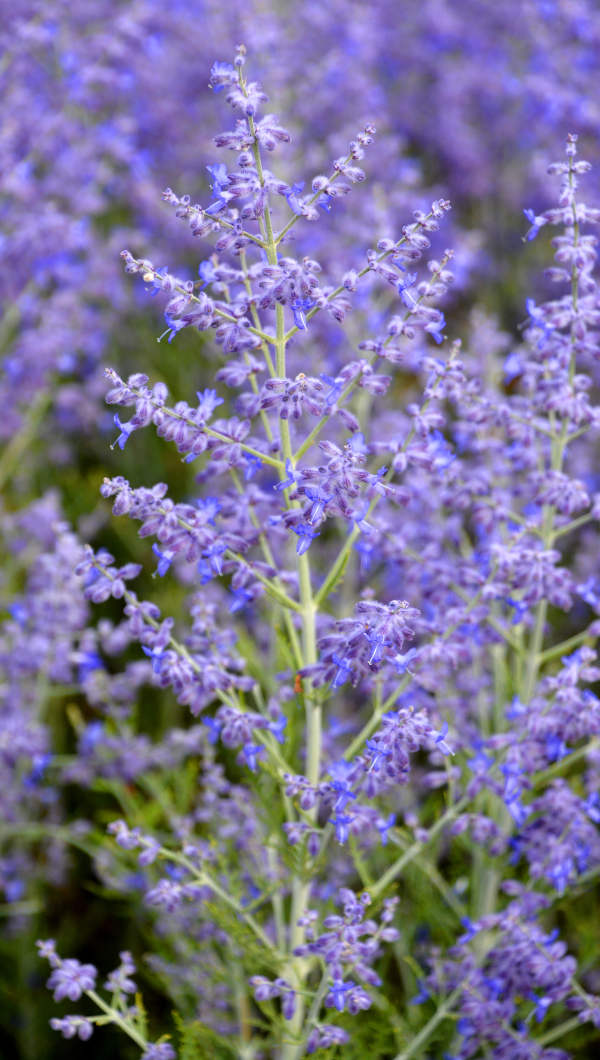
What to plant with Perovskia
Where do we begin?! This obliging plant will mix easily with almost any style of planting, from a generous cottage garden to a naturalistic grass and wildflower theme. Perhaps our favourite use of it is with other steely-coloured, drought tolerant plants in a dry gravel garden. Think eryngium, echinops, artemisia, and Euphorbia characias.
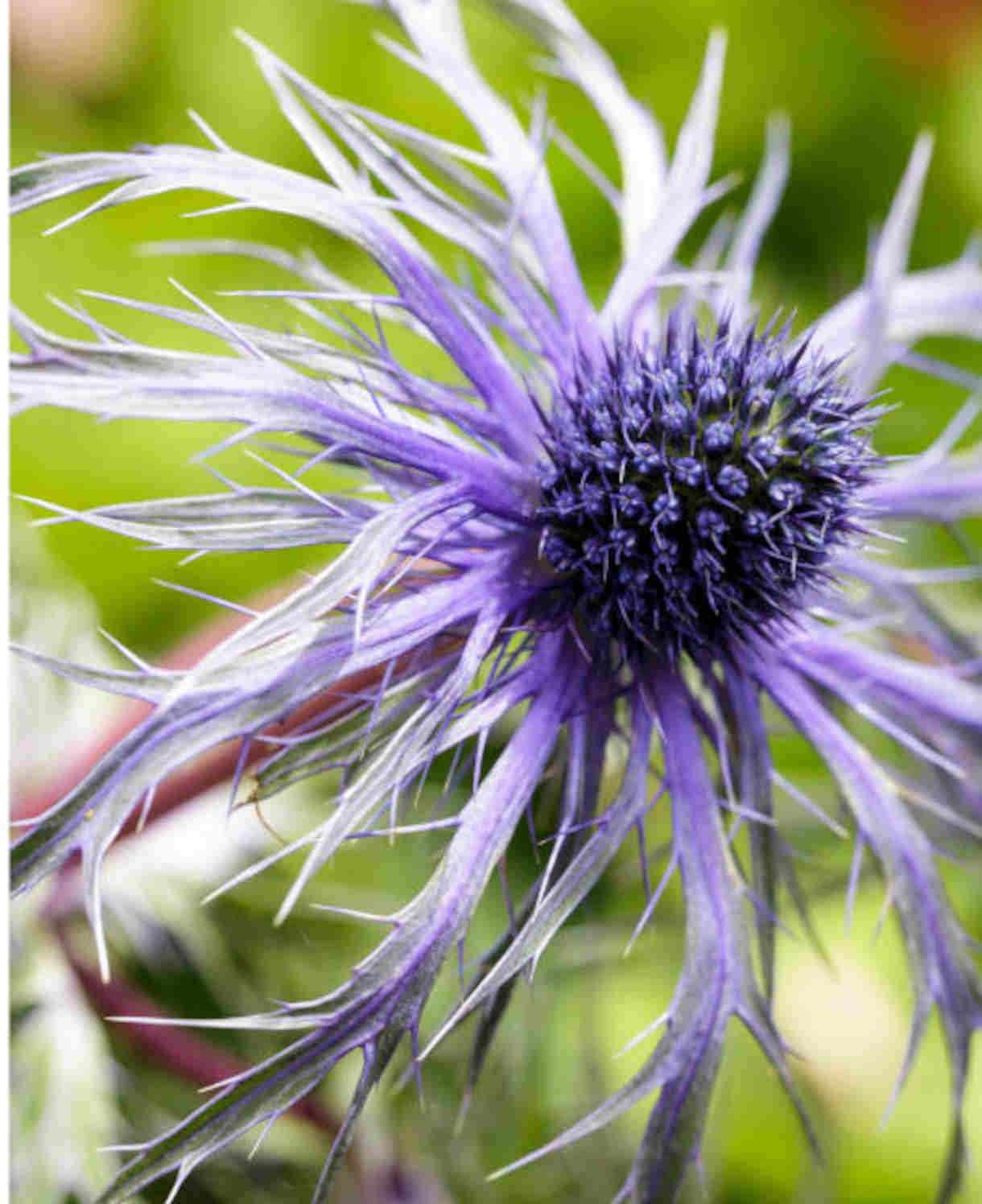
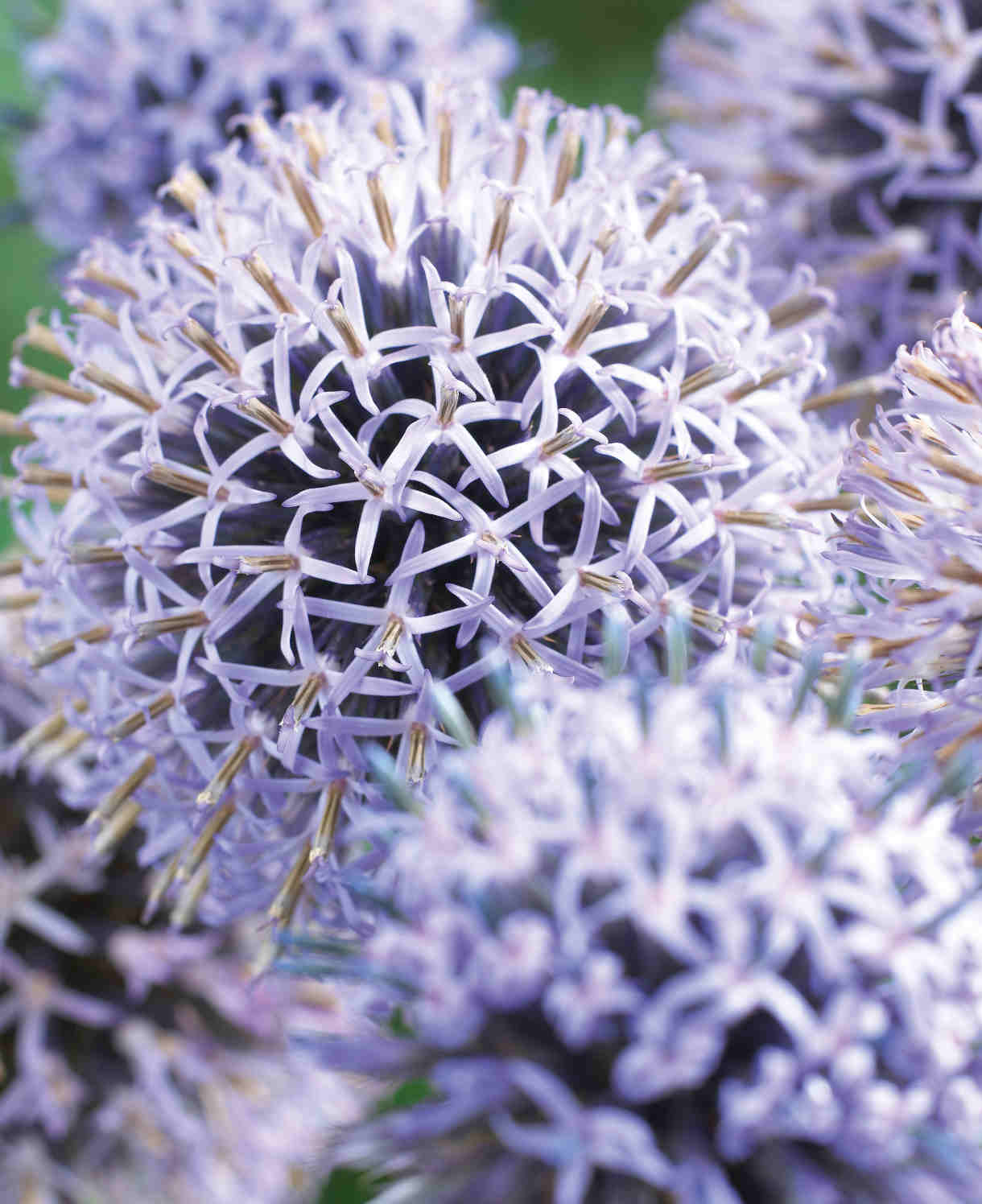
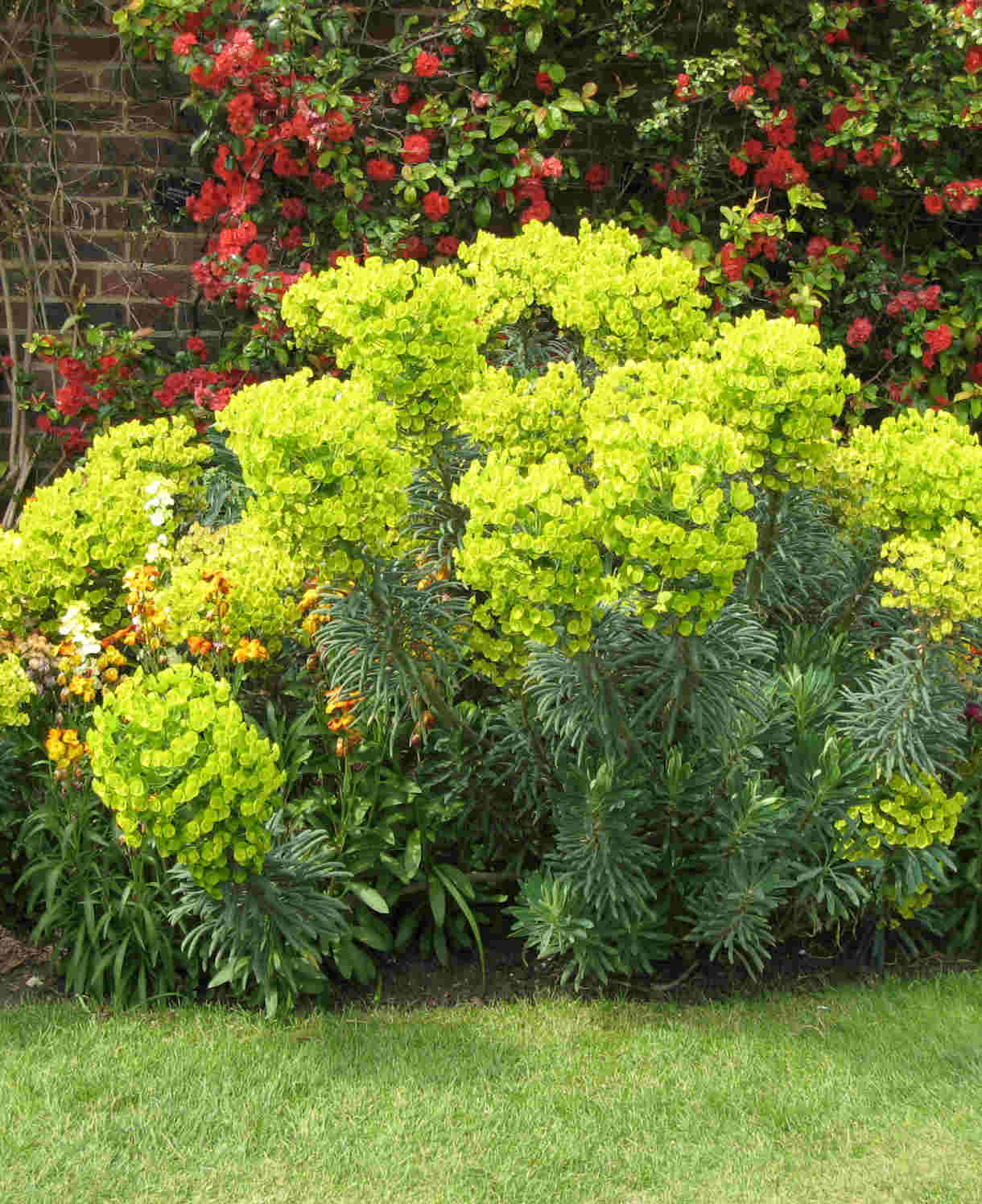
How to care for Perovskia
Pruning and Deadheading
Cut this subshrub back each autumn or spring to a woody framework about 5cm above ground level. This will generate a fresh surge of strong, vigorous, flowering growth every year.
Watering
Water perovskia until established, after which this drought tolerant plant is relatively self-sufficient.
Container-grown perovskia, on the other hand, can be thirsty and will need to be watered freely throughout the growing season. Keep barely moist during winter.
Cold Protection
Perovskia is very hardy and will survive the average UK winter without the need for any additional protection.
Like all plants, those grown in a container can be more susceptible to the cold. If you are expecting a very cold snap, it can be worth wrapping your containers with fleece or hessian to give the roots a little extra insulation. Or, if an option, move them temporarily into an unheated greenhouse, conservatory, or porch.
Pests and Diseases
Perovskia tends to be trouble free.
How to propagate Perovskia
Perovskia can be propagated by cuttings in late spring or summer.
- Find non-flowering shoots 5-10cm long and snip off the plant.
- Put them in a plastic bag straight away to prevent drying out.
- Fill a container with a compost mix which is at least 50% perlite (or if you prefer, as we do, 100% perlite).
- Remove the lowest third of leaves.
- Insert the cuttings into the compost and water lightly. Several cuttings can be put in the same container if there is enough space to do this without them touching.
- Place in a propagating unit with bottom heat if you have one, or covered with a plastic bag on a windowsill if not (out of direct sunlight).
- Keep the cuttings misted and occasionally watered until they root. You will know this has happened when roots emerge out of the bottom of the container.
- Gently remove rooted cuttings and pot them into individual pots. Grow on in an unheated conservatory or greenhouse they are big enough to be planted out.
Common Perovskia questions
Where does perovskia grow?
The natural habitat of this subshrub is sunny, rocky sites throughout Afghanistan. In garden cultivation terms, this means it prefers full sun and relatively poor, well-draining soil.
How tall does perovskia grow? ?
The height of this plant can vary. The cultivars offered by Hayloft range from 50cm to 120cm in height. Check individual descriptions for details.
Can you take cuttings of perovskia?
See our ‘How to propagate perovskia’ section above for more details.
Is perovskia a perennial?
Perovskia is a subshrub. This means it has a permanent woody base and soft, herbaceous top growth which dies back each year.
